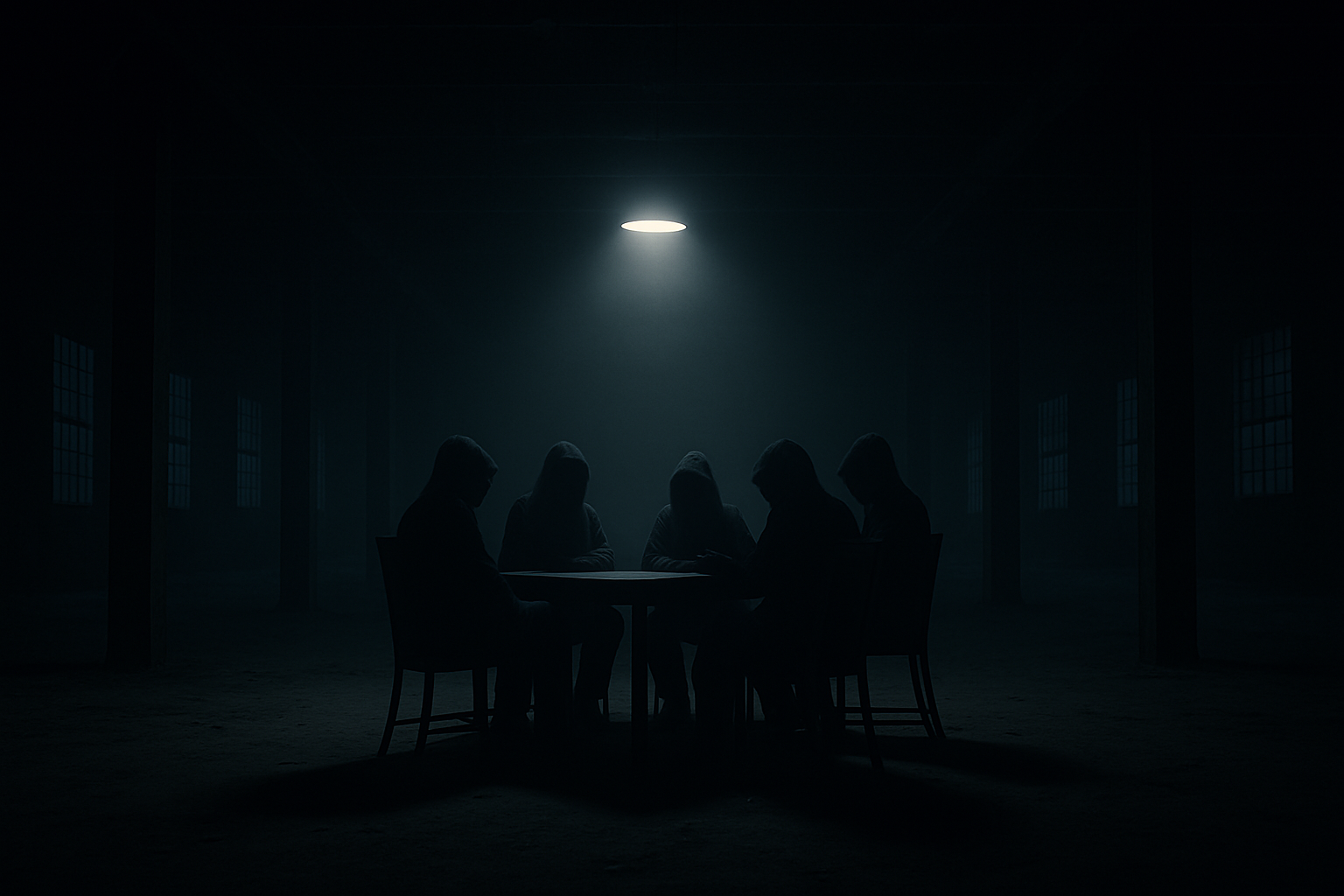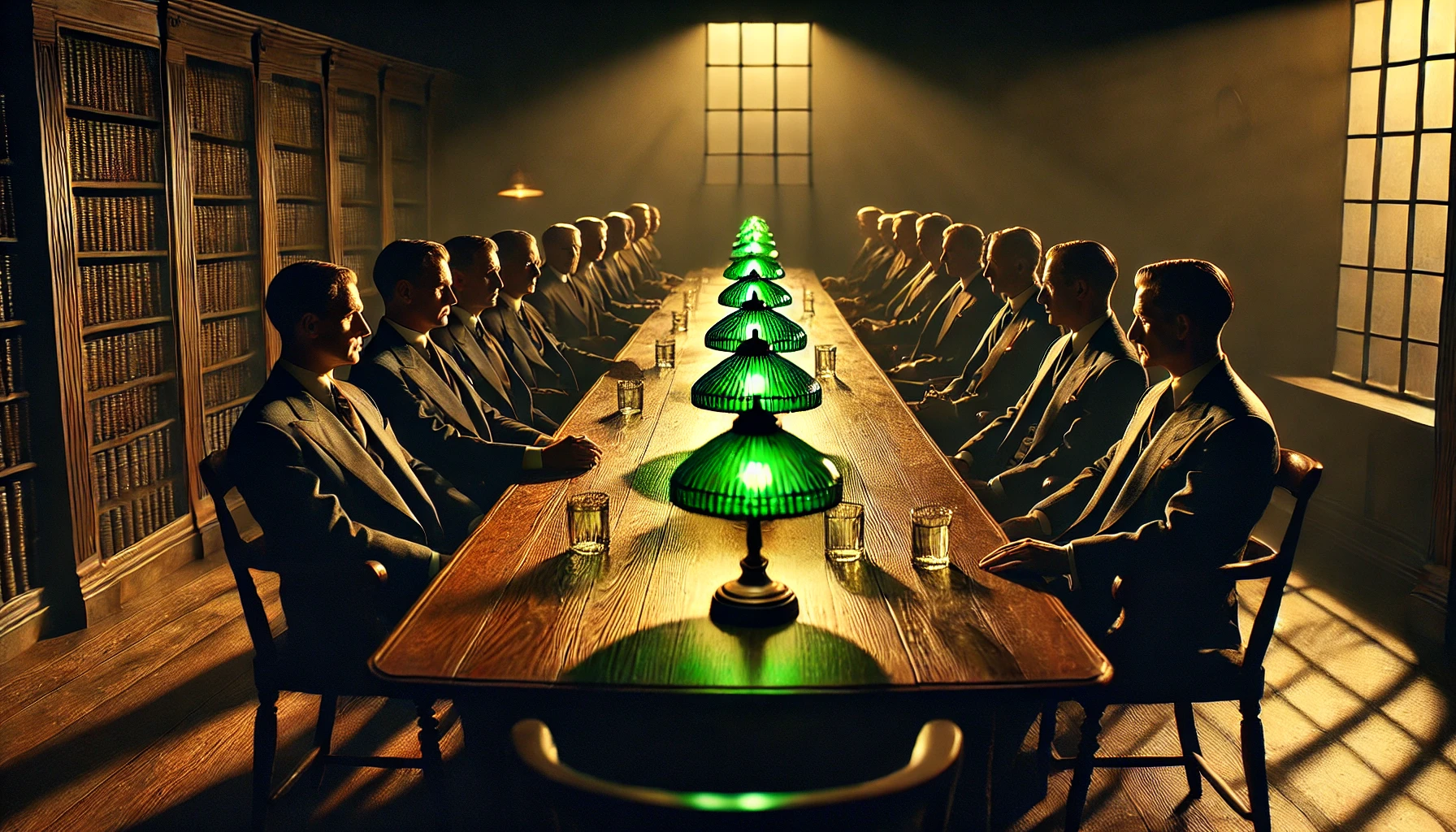Post 1 – Introduction
Human societies have always required structures—laws, institutions, cultural norms—to prevent chaos and maintain stability. These structures, both formal and informal, are what we call “orders.” The term can be understood on multiple levels. Internally, a state or nation has its own unique government framework, social organization, and power hierarchies. Externally, states interact with each other according to a broader set of rules, treaties, and norms—an international order.
Yet beneath these visible frameworks, there can exist hidden or less formalized networks that also influence how power is distributed and decisions are made. Such influences range from bureaucratic inertia, corporate lobbying, and intelligence agencies to clandestine groups or old-boy networks. Before diving into the historical trajectory of world orders, as well as exploring secret societies, the “deep state,” and elite forums such as the World Economic Forum (WEF), it’s vital to define terms clearly and understand why they matter.
1. Defining “Internal Order” in a Country
- Governance and Institutions
- At its most basic, internal order refers to how a nation organizes its government and enforces laws. This includes the three branches of government—executive, legislative, and judicial—along with the bureaucracy that implements policies.
- Examples: A constitution (in democracies) provides the legal framework. Bureaucratic agencies (like a department of defense or treasury) ensure policies are enacted. Law enforcement (police, intelligence) preserves internal stability.
- Informal Power Structures
- Beyond official institutions, every country has less-visible networks. These can include business conglomerates, religious authorities, influential families, or unions that significantly sway policy from behind the scenes.
- Sometimes labeled “establishment” or “shadow” power, these informal webs can accumulate influence due to wealth, tradition, or strategic alliances.
- Role of Civil Society
- Non-governmental organizations (NGOs), grassroots movements, activist groups, and the media serve as checks on official power.
- However, these groups can also be co-opted or influenced by wealth or ideology, complicating the internal order further.
2. The Concept of a “Rules-Based” Global Order
- Post-WWII Architecture
- After World War II, leaders sought to prevent future global catastrophes by creating structures like the United Nations (UN), the International Monetary Fund (IMF), and the World Bank (originally the Bretton Woods system).
- The idea was that if countries followed rules—especially around trade, sovereignty, and diplomacy—major power conflicts would be less likely.
- Critiques and Counterpoints
- Many argue that this “rules-based” order can be hypocritical, as powerful nations sometimes selectively follow or enforce rules.
- The system is often seen as Western-centric, shaped by U.S. leadership and European allies, potentially marginalizing regions like Africa, Latin America, or parts of Asia.
- Reason for Importance
- Regardless of whether one views it as hypocritical or beneficial, the rules-based order has profoundly impacted international trade, conflict resolution, and humanitarian interventions.
3. The Rise of Elite Forums and “Shadow” Power
- Globalization and Economic Interdependence
- Multinational corporations, financial institutions, and technology giants have become major players on the world stage. Often, their revenues exceed the GDPs of smaller countries.
- As trade barriers lowered, capital could flow more freely—leading to significant private-sector power that sometimes rivals that of public governments.
- Elite Gatherings
- Events like the Davos meeting of the World Economic Forum bring together corporate leaders, heads of state, and select NGOs to discuss global challenges.
- Critics label these gatherings as echo chambers that shape global policy outside democratic accountability.
- Hidden Networks or “Deep States”
- The term “deep state” originally pointed to alleged networks within Turkey’s military and bureaucracy. It’s now used more broadly—especially in the U.S.—to suggest an unelected, permanent government or intelligence apparatus operating behind the scenes.
- While bureaucracies do have entrenched cultures and inertias, some of the more extravagant conspiracy theories can blur lines between verifiable insider influence and speculation.
4. Historical Foundations: Secret Societies and Religious Institutions
While the concepts of “secret societies” and “religious orders” are often treated as separate from everyday governance, historically they’ve played critical roles. From the Knights Templar’s role in medieval finance to the Freemasons’ connections among 18th-century revolutionaries, these groups often bridged “internal” and “geopolitical” realms:
- Knights Templar: Built a transnational financial network under the auspices of protecting pilgrims. Their downfall in the 14th century remains a classic tale of politics, power, and intrigue.
- Freemasons: Evolved from medieval craft guilds into a fraternity that spread across Europe and the Americas. Their ideas about individual liberty and rationalism influenced various political revolutions, though their secrecy fueled conspiracies.
- Religious Institutions: The Catholic Church, for instance, was once Europe’s most powerful institution, shaping monarchies and empires alike. Other religions—Islam, with its caliphates; Buddhism and Hinduism in Asia—similarly molded political structures over centuries.
5. Why Understanding “Order” Matters for Humanity
- Social Stability vs. Potential Oppression
- Well-functioning internal orders can promote social stability, protect rights, and foster economic development.
- Conversely, these same structures can be hijacked by authoritarian regimes or secret networks to control populations and suppress dissent.
- Informed Citizenry
- Recognizing how power is organized (and sometimes obscured) equips citizens to engage in more effective activism, demand transparency, and hold institutions accountable.
- Global Challenges
- Issues like climate change, pandemics, and economic inequality require collaborative solutions across borders. Understanding how today’s international order either supports or hinders such collaboration is crucial.
6. Preview: Future Articles in This Series
- Article 2 will walk through a detailed historical timeline of how the modern geopolitical order emerged—from the Peace of Westphalia to the bipolar Cold War world, to our current era of rising powers and potential fragmentation.
- Article 3 will dissect how institutions like the WEF, multinational corporations, and think tanks (e.g., Council on Foreign Relations, Chatham House) operate, their origins, and the controversies they spark.
- Article 4 will delve deeply into the concept of the “deep state,” exploring its original meanings, real-world examples, and the layers of conspiracy that have grown around it.
- Article 5 will give a thorough account of historical societies—Knights Templar, Freemasons, Bavarian Illuminati, Opus Dei, and more—separating myth from documented fact.
- Article 6 will examine how religious institutions have shaped and sometimes covertly guided political orders, with case studies from Christianity, Islam, Judaism, Hinduism, and Buddhism.
- Article 7 will stitch together these threads to discuss the grand interplay of hidden networks, elite gatherings, secret orders, and how humanity might navigate a future defined by rapid technological change, ecological crises, and shifting power balances.
Conclusion
Power, in its many forms, thrives on both visibility and opacity. Understanding how “orders” are formed—internally within nations and externally among nations—helps explain why the world works the way it does. By examining formal institutions, wealthy elites, clandestine networks, and the intertwining of religion and politics, we can gain clearer insights into who makes the rules, how they enforce them, and whose interests are served.
In the articles ahead, we’ll delve progressively deeper into each dimension, weaving a comprehensive picture of the forces that shape the global landscape. If the first step is defining “order” and recognizing the overlapping realms of influence, the next steps will lay bare the historical and contemporary realities behind each of these forces.
Stay tuned for Article 2, where we journey from the 17th century Peace of Westphalia to the fluid dynamics of modern geopolitics, exploring how empires, wars, and new economic systems gave birth to the global “rules-based” architecture we see today.

